Two years ago we were in the Philippines with every intention of visiting the very famous rice terraces in the north of the country. At the time, however, this part of the country was in the middle of a very severe drought and everything was either dead or dying. The normally stunning visuals would have been impacted but more importantly the hard working people of the area were suffering greatly and didn't need another overfed tourist wandering around complaining that his photo's were ruined because of the drought.
As a result, the terraces were a top priority for this go around
. Road transport is really the only option for getting to the north of Luzon and that used to be a real chore but Gloria Arroyo, a recent Philippino president, was somewhat committed to infrastructure improvements (vs robbing the country blind like so many others). There's also an approaching election in the Philippines which has accelerated the building programs since sponsoring politicians get their name in lights (buying voters with their own money- perfected in Canada but a work in progress here). The good news is that it will soon be a relatively painless process to visit the north but the bad news is that, in the here and now, we were subjected to never-ending traffic construction chaos that the Toronto Works Crews could only dream of creating (although to be fair, unlike Toronto, most of the Philippino crews actually seemed to be working and they would do their best to squeeze you through which often times meant very tricky mountainside balancing acts with excavators holding their buckets high over you like a heavy machinery guillotine)
. Along the way I renewed my love affair with the quintessential Filipino vehicle- the Jeepney. When American troops began to leave the Philippines at the end of WWII, hundreds of surplus jeeps were sold or given to the Filipinos; they stripped them down and altered or customized the jeeps to accommodate more passengers, added metal roofs for shade, and decorated the vehicles with vibrant colors and bright chrome hood ornaments. The jeepney rapidly emerged as a popular and creative way to re-establish inexpensive public transportation, which had been virtually destroyed during WWII.
At one time people were choosey about which vehicle they would ride in and the drivers had to be very competitive with their decorations- now, in places like Manila, they look very run down but on our drive north the eye-catching, pimped out, shiny Jeepneys I remembered from our last trip here started showing up all around us. DH gives me a hard time for all the photos I take of these home-made machines but you will only find Jeepneys in The Philippines (having done away with luxury items like air bags, seat belts, meaningful brakes, apparently they won't pass the safety tests of any potential export market)
. Having seen the magnetic draw of things like car and boat shows, I am amazed that the tourism authorities in the Philippines don't do more with these works of art. And I don't think I took that many pictures...yet.
We survived our first day, somewhat shaken and stirred, and were spending the night at an eco lodge near Banaue- the rooms were all individual huts built in the manner of ancient native Ifugao cottages and the entire complex had great views of the surrounding Hapao rice terraces. A very unique place to stay that will certainly be a top choice once the access road if fixed- although DH was very concerned that an Eco lodge would keep a caged monkey by the front entrance and I was even more concerned that they needed to put a sign in the men's toilet that read "Please Don't Urinate On The Floor"?
The 2000 year old Banaue rice terraces are a UNESCO World Heritage site (those UNESCO boys do get around), and while many are still in use today, the outer rims are showing signs of deterioration
. They were created by the Ifugao (local native people), in a massive engineering project to cover the sides of the valleys (probably 200 meters from floor to rim) for several miles, irrigated by means of mountain streams and springs that have been tapped and channelled into canals that run downhill through the rice terraces. There's actually a plaque at one of the viewpoints from an American-Filipinno engineering society that recognized just how incredible an engineering feat these terraces were.
Despite good intentions, you could really see evidence of neglect which supported the UNESCO concerns that many of the younger Filippino population in the area were choosing far less laborious careers and the terraces are starting to deteriorate. Surprisingly some of the worst neglect seemed to be within the immediate viewing areas of Banaue. If you've ever woken in a cold sweat in the middle of the night thinking that your life might not be complete without seeing mountains of rice, you might want to make near term travel plans for the Philippines. As the Asian economic boom starts to lift the Philippines I can't imagine the rice terrace situation improving. It is extraordinarily hard work with a very limited financial reward to both maintain the terraces as well as growing and harvesting the rice itself. All of the older locals almost invariably walked with a dramatic stoop- the result of years of back breaking labour.
On day two of our visit we went to see the Batad Rice Terraces. While the rice terraces of Banaue are mud-walled, those of Batad are stone-walled. They form an amphitheatre and are an impressive sight. To get there DH decided that we needed to do a long trek which meant lots of uphill and at an altitude of 5,000 ft with humidity in the 1,000% range, I was glistening pretty good in no time (DH has replaced her 'runners high' with a 'trekkers high' so if the Princess wants to hike, we hike). After leaving our jeepney driver safely wrapped in his hammock, it was a relatively uneventful hike except for dodging just about everyone else who decided to drive the dirt path up to Saddle Point before a 40 minute downhill saunter. As you climb down to the tiny village of Batad, it really stretches the imagination to think that the inhabitants continue to live and work in this picturesque setting in much the same manner as they have for thousands of years.
Mountains Of Rice
Tuesday, March 13, 2012
 Banaue, Philippines
Banaue, Philippines
Other Entries
-
31Apple Strudel In Asia
Jan 0766 days prior Hoi An, Vietnamphoto_camera23videocam 0comment 12
Hoi An, Vietnamphoto_camera23videocam 0comment 12 -
32Still Called Saigon
Jan 1063 days prior Ho Chi Minh City, Vietnamphoto_camera29videocam 0comment 15
Ho Chi Minh City, Vietnamphoto_camera29videocam 0comment 15 -
33Skinny Shows Off
Jan 1261 days prior Tây Ninh, Vietnamphoto_camera9videocam 0comment 4
Tây Ninh, Vietnamphoto_camera9videocam 0comment 4 -
34Bus Tours Must Be An Aquired Taste
Jan 1360 days prior Can Tho, Vietnamphoto_camera29videocam 0comment 9
Can Tho, Vietnamphoto_camera29videocam 0comment 9 -
35Centre Of Attention
Jan 1459 days prior Rach Gia, Vietnamphoto_camera6videocam 0comment 4
Rach Gia, Vietnamphoto_camera6videocam 0comment 4 -
36Are We Beach People?
Jan 1558 days prior Phu Quoc Island, Vietnamphoto_camera11videocam 0comment 7
Phu Quoc Island, Vietnamphoto_camera11videocam 0comment 7 -
37The Killing Fields
Jan 1855 days prior Phnom Penh, Cambodiaphoto_camera26videocam 0comment 18
Phnom Penh, Cambodiaphoto_camera26videocam 0comment 18 -
38What A Nice Surprise!
Jan 2251 days prior Singapore, Singaporephoto_camera51videocam 0comment 23
Singapore, Singaporephoto_camera51videocam 0comment 23 -
39Wonder Of The World
Jan 2647 days prior Siem Reap, Cambodiaphoto_camera25videocam 0comment 8
Siem Reap, Cambodiaphoto_camera25videocam 0comment 8 -
40Bigger Wow Than Angkor Wat??
Jan 3142 days prior Siem Reap, Cambodiaphoto_camera48videocam 0comment 25
Siem Reap, Cambodiaphoto_camera48videocam 0comment 25 -
41Riding The Rails
Feb 0240 days prior Battambang, Cambodiaphoto_camera33videocam 0comment 15
Battambang, Cambodiaphoto_camera33videocam 0comment 15 -
42Floating Village
Feb 0438 days prior Kâmpóng Chhnăng, Cambodiaphoto_camera16videocam 0comment 12
Kâmpóng Chhnăng, Cambodiaphoto_camera16videocam 0comment 12 -
43Pass The Pina Colada
Feb 1725 days prior Taling Ngam, Thailandphoto_camera11videocam 0comment 5
Taling Ngam, Thailandphoto_camera11videocam 0comment 5 -
44Close Encounters With Jellyfish
Feb 2913 days prior Koror, Palauphoto_camera24videocam 0comment 12
Koror, Palauphoto_camera24videocam 0comment 12 -
45Yap, Yap, Yap
Mar 0112 days prior Colonia, Micronesiaphoto_camera14videocam 0comment 6
Colonia, Micronesiaphoto_camera14videocam 0comment 6 -
46Breakfast At Denny's
Mar 0310 days prior Tumon Heights, Guamphoto_camera5videocam 0comment 1
Tumon Heights, Guamphoto_camera5videocam 0comment 1 -
47Tropical Ice Skating
Mar 058 days prior Manila, Philippinesphoto_camera13videocam 0comment 7
Manila, Philippinesphoto_camera13videocam 0comment 7 -
48Mountains Of Rice
Mar 13 Banaue, Philippinesphoto_camera46videocam 0comment 27
Banaue, Philippinesphoto_camera46videocam 0comment 27 -
49Easier Path To Heaven?
Mar 152 days later Sagada, Philippinesphoto_camera22videocam 0comment 18
Sagada, Philippinesphoto_camera22videocam 0comment 18 -
50Crater Swim
Mar 174 days later Mount Pinatubo, Philippinesphoto_camera25videocam 0comment 5
Mount Pinatubo, Philippinesphoto_camera25videocam 0comment 5 -
51Rainy Beach Paradise
Mar 207 days later Boracay, Philippinesphoto_camera10videocam 0comment 5
Boracay, Philippinesphoto_camera10videocam 0comment 5 -
52City Of Sails
Mar 2714 days later Auckland, New Zealandphoto_camera13videocam 0comment 10
Auckland, New Zealandphoto_camera13videocam 0comment 10 -
53The Gift Of Togetherness
Apr 0119 days later Paihia, New Zealandphoto_camera18videocam 0comment 13
Paihia, New Zealandphoto_camera18videocam 0comment 13 -
54Surfs Up, But We're Not
Apr 0422 days later Raglan, New Zealandphoto_camera6videocam 0comment 10
Raglan, New Zealandphoto_camera6videocam 0comment 10 -
55Bubbling Cauldren
Apr 0826 days later Rotorua, New Zealandphoto_camera63videocam 0comment 32
Rotorua, New Zealandphoto_camera63videocam 0comment 32 -
56"Stunning Walk"
Apr 1129 days later Marahau, New Zealandphoto_camera16videocam 0comment 6
Marahau, New Zealandphoto_camera16videocam 0comment 6 -
57Heli Hike
Apr 1432 days later Franz Josef, New Zealandphoto_camera29videocam 0comment 13
Franz Josef, New Zealandphoto_camera29videocam 0comment 13 -
58Free WiFi??
Apr 1634 days later Wanaka, New Zealandphoto_camera32videocam 0comment 28
Wanaka, New Zealandphoto_camera32videocam 0comment 28 -
59A "Cracker Sunset"
Apr 1937 days later Doubtful Sound, New Zealandphoto_camera16videocam 0comment 18
Doubtful Sound, New Zealandphoto_camera16videocam 0comment 18 -
60Go Highlanders!!
Apr 2038 days later Dunedin, New Zealandphoto_camera14videocam 0comment 11
Dunedin, New Zealandphoto_camera14videocam 0comment 11 -
61Rail Trail
Apr 2240 days later Middlemarch, New Zealandphoto_camera18videocam 0comment 19
Middlemarch, New Zealandphoto_camera18videocam 0comment 19 -
62Swimming With Hector
Apr 2442 days later Oamaru, New Zealandphoto_camera27videocam 0comment 9
Oamaru, New Zealandphoto_camera27videocam 0comment 9 -
63Quake And Shake
Apr 2745 days later Christchurch, New Zealandphoto_camera19videocam 0comment 7
Christchurch, New Zealandphoto_camera19videocam 0comment 7 -
64Looking For Crocodile Dundee
Apr 3048 days later Darwin, Australiaphoto_camera4videocam 0comment 4
Darwin, Australiaphoto_camera4videocam 0comment 4 -
65Camping With Casper
May 0250 days later Litchfield Park, Australiaphoto_camera19videocam 0comment 9
Litchfield Park, Australiaphoto_camera19videocam 0comment 9 -
66Croc Land
May 0452 days later Kakadu National Park, Australiaphoto_camera22videocam 0comment 7
Kakadu National Park, Australiaphoto_camera22videocam 0comment 7
Comments
2025-05-23
Comment code: Ask author if the code is blank

 Banaue, Philippines
Banaue, Philippines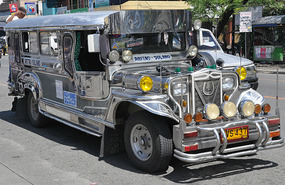
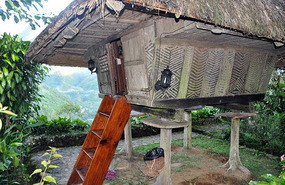
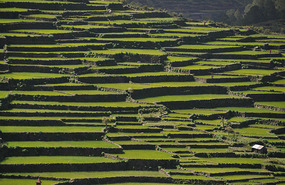
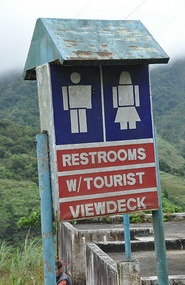

























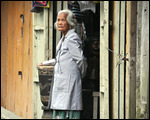



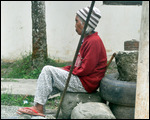








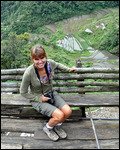










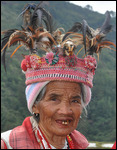


Carol
2012-03-23
Amazing photos of an absolutely stunning place. Please keep them coming as you are educating all of us. What a tough job, planting rice. We don't appreciate what it takes for us to have and eat a wonderful food!